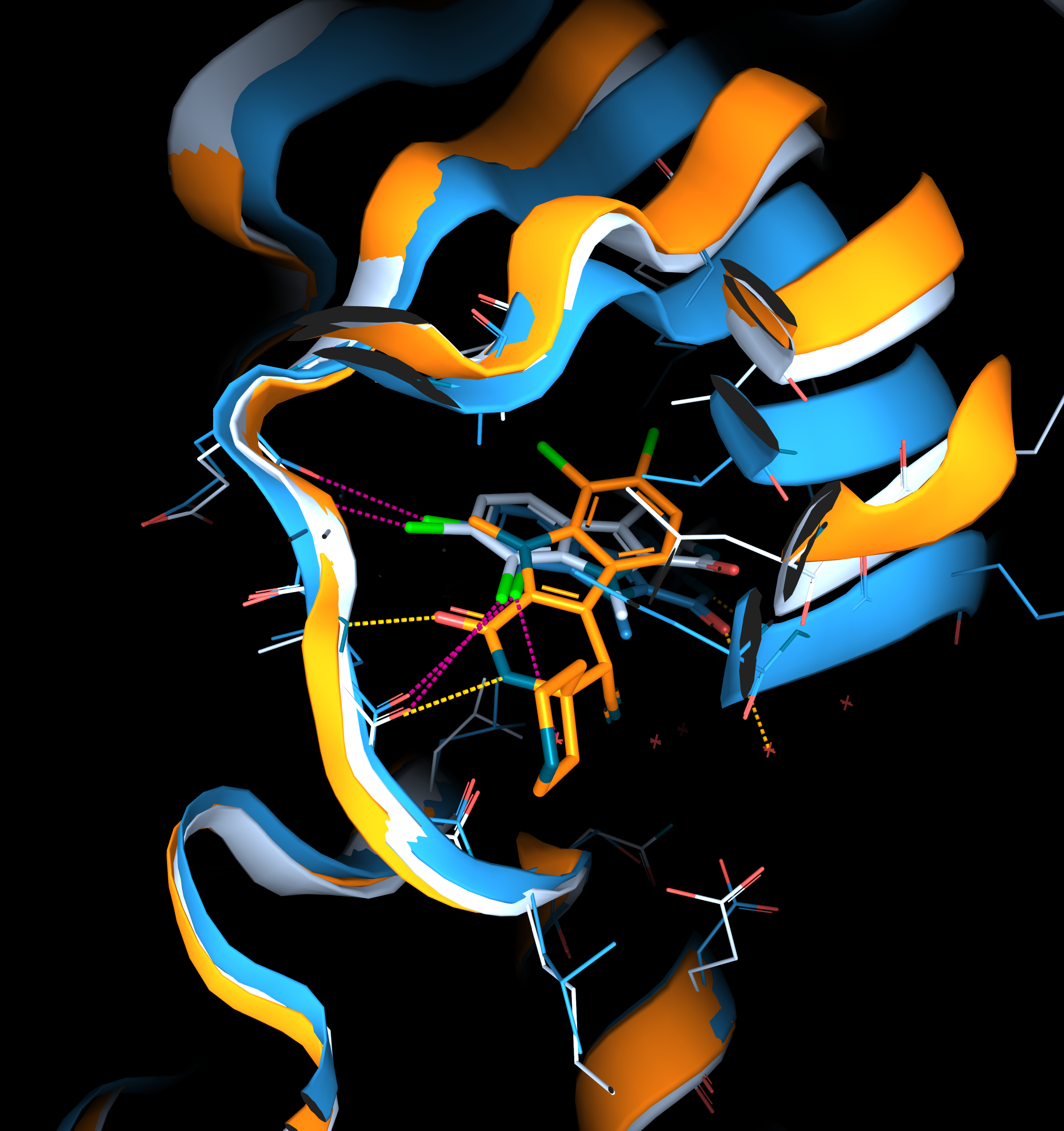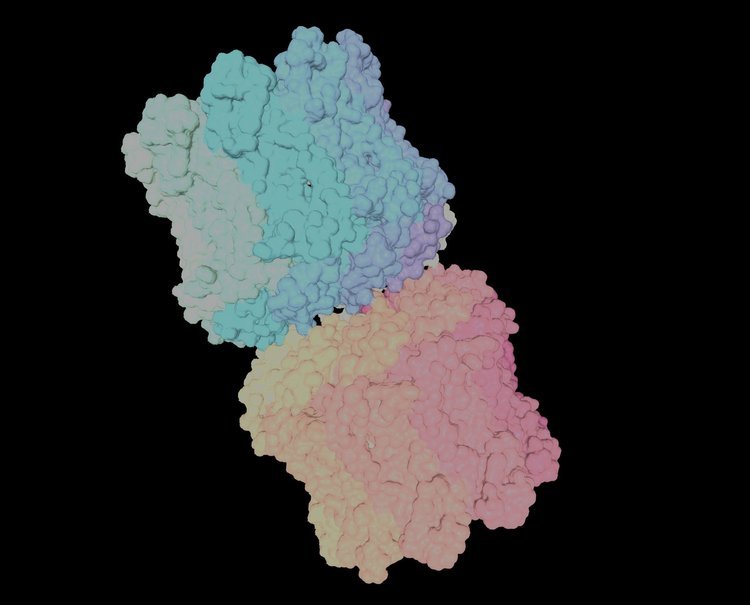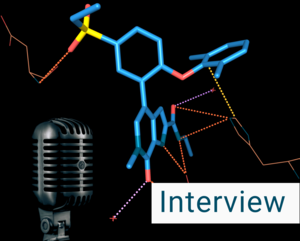
Understanding glycan-sensitive vs glycan-agnostic PD-1 antibodies using 3decision 2.0
In this use case, we have compared the different binding modes of PD-1 and its therapeutic antibodies to understanding its glycosylation landscape critical for guiding the development of next-generation immunotherapeutics.
Discover the key findings from three pivotal 2024 papers and how the 3decision 2.0 new feature can be used to visualize and explore these findings.

Prediction, expertise, and validation: An integrated approach to advancing SBDD
Discover thoughts, practical examples, and perspectives of structural biologist and computational chemists on how integrating prediction, expertise, and experimental validation can enhance Structure-Based Drug Discovery (SBDD). In our latest blog, we summarized the key highlights from the Discngine Labs Live event in Cambridge, UK and included an event recording to fully benefit from the event insights.

What are the recent trends in Structural Biology and Drug Discovery? - Insights from the PSDI conference
The rapid advancements in structural biology techniques are revolutionizing drug discovery. We had the opportunity of exploring these breakthroughs at the PSDI Conference in Paris, November 2024.
Curious about the highlights? Check out our latest blog post by Elisa Martino, where she shares key insights from the event »

Antibody developability: How to effectively navigate challenges and opportunities in predicting antibody properties?
Explore the insights from the expert panel about the current landscape, challenges, and transformative potential of AI/ML technologies in supporting antibody developability.

Evaluating protein-protein interactions in AF3 predicted complexes: a PD-1 case study
Can protein-protein complex models generated by AF3 effectively serve as starting points for predicting protein-protein interactions and identifying binding hotspots, thus facilitating drug design?
Using our software, 3decision®, we evaluated the accuracy of the AF3 models using Programmed cell death protein 1 (PD-1) complexes as a case study.

Leverage Experimental and in Silico 3D Protein Structures to Accelerate SBDD Projects
Gaining structural insights rapidly at the onset of a Structure-Based Drug Discovery project is key to driving the development of novel compounds. In this article, we illustrate the structure registration capabilities of 3decision® through a use case reproducing the identification of next-generation RXR targeting compounds.

How to best exploit 3D protein structures for ideation in SBDD
Explore the insights from industry experts on how to manage vast 3D protein structures to facilitate new design ideas in SBDD

Understanding selectivity of CLK kinase inhibitors: structural insights with 3decision®
Gain valuable insights into the selectivity of CLK kinase inhibitors with 3decision®. In this use case, we will show you the data sets preparation and binding mode analysis of the CLK kinase inhibitors’ using some of the 3decision’s cool features adapted to this specific scientific use case.

The impact of AlphaFold in drug discovery and emerging ML-methods
Following our Discngine Labs event and discussion with scientists in early drug discovery, we have summarized insights and experiences of the community on how they use AlphaFold technology to make it more suitable for drug discovery projects.
![The future of Cryo-EM in Pharma [event highlights]](https://images.squarespace-cdn.com/content/v1/64ef89ef638a126e29aba776/1708127142264-OPP32199H0HJACJXKCMV/Discngine+Labs+promo+-+idealogo+FINAL.png)
The future of Cryo-EM in Pharma [event highlights]
Industry experts shared their experience with the application of the Cryo-EM structures in their drug discovery projects in our Discngine Labs event. Have a look at the key take-aways and access the recording

Starting with 3decision®: exploration of Ikaros protein family – a molecular glue use case
In this use case, we will show you the structural differences between Helios and its family members that aided the design of molecular glue. We used some of 3decision’s cool features adapted to this specific scientific use case.

5 fast-growing techniques in structural biology and their impact on drug discovery
Get to know the latest advances of five structural biology techniques and how how they impact structure-based drug discovery

Starting with 3decision®: Allosteric pocket detection in BCR-ABL1 kinase
I found my way to quickly learn new software: by validating its features. In this article, I am presenting the retrospective analysis of the detection of BCR-ABL1 allosteric binding site using the 3decision Pocket Explorer feature.

Spotting differences in large structure collections
This short post shows how to quickly analyze larger collections of structures and check for common and different parts among such large sets of structures.

What are the challenges for medicinal chemists when working with 3D structures? - Interview
The continuous increase in the available 3D structural data brings along changes in the medicinal chemistry field. Dr. George Sheppard, Senior Principal Research Scientist at AbbVie, shared his thoughts on the benefits for medicinal chemists using 3D information, current challenges and limitations, and proposed potential ways for improvement, in the following interview.

How to speed up the preparation of data sets for Structure-Based Drug Design? – Webinar Recap
The construction of accurate data sets prior to the in-silico experiments is a crucial first step in many SBDD projects. In our latest webinar, we explained how 3decision® can help ease and speed up this process. For better understanding, we presented three common use cases in SBDD using our platform.

Getting ready for AlphaFold with 3decision®
Google-owned company DeepMind has achieved to predict 3D protein shapes with high accuracy and speed using the AI program AlphaFold. Although still in the early phase, this method can have a significant impact on drug discovery, accelerating the development of new drugs. In this article, we are discussing the importance of getting ready for the new source of structural data and how to gain the most of structural knowledge.

Should medicinal chemists use 3D molecular modeling tools?
We sat down with Dr. Alexis Denis, Ph.D. Medicinal Chemistry Director at Galapagos to collect his thoughts on the question: Should medicinal chemists use 3D molecular modeling tools?
We were able to understand how he manages the collaboration in SBDD teams, but also to understand his vision of how these positions/roles could evolve in the future.

Discngine & UserStudio: Uplifting User Experience in life science research applications
Recently, our collaborative platform, 3decision, just saw itself complemented with two new features (subpocket search & interaction search) and a radically different User Experience (UX). This new UX, with an updated User Interface (UI), is the result of months of collaborative work between UserStudio and the 3decision team.
In order to tell the story of this project, we gathered people from both companies to answer a few questions.

SARS-Cov-2 - part 3 - nsp1: A hopefully more detailed analysis of the cellular saboteur
My German cartesian mind (here we go with stereotypes) asks me to start with the first protein expressed by the viral genome of SARS-Cov-2, nsp1. That is, by far, not the low hanging fruit. But it is interesting to learn more about the roles of the different constituents of the virus. Nsp1 actually has also a few very interesting roles to facilitate the viral lifecycle in its host environment.
